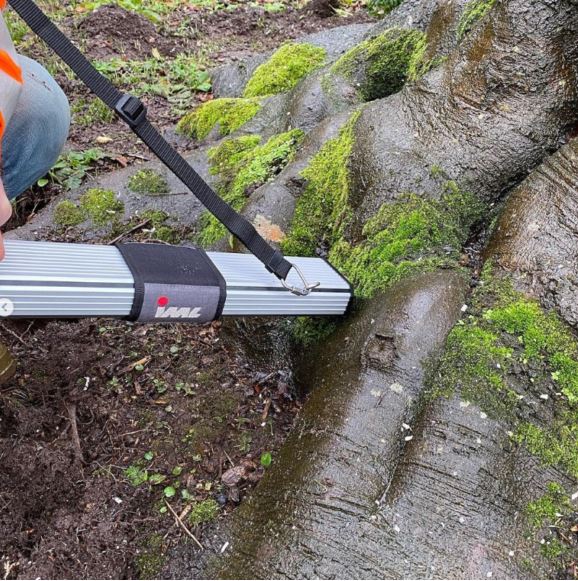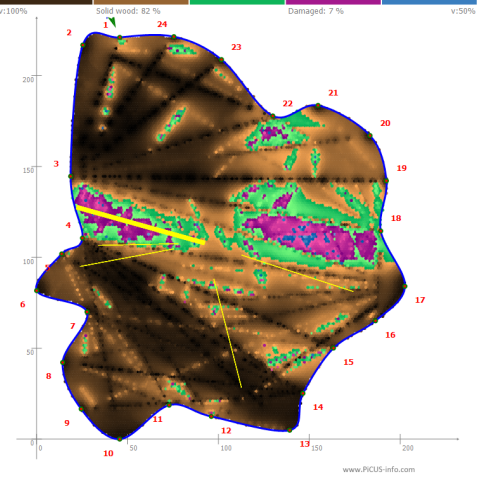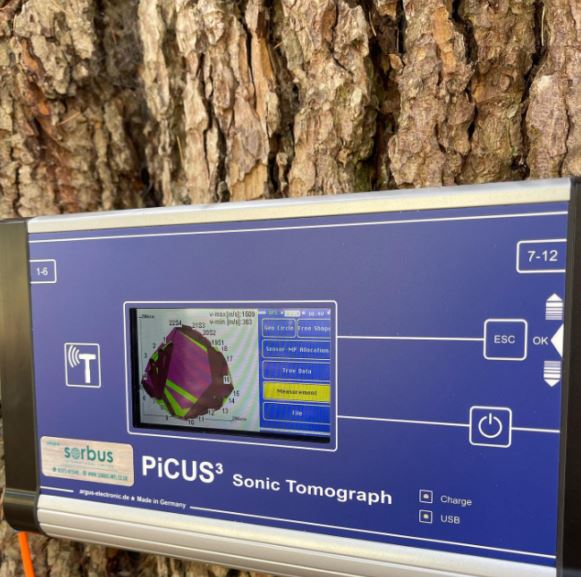Tree Decay Detection
East Devon Tree Care are able to arrange tree decay detection reports. These reports are usually undertaken at the request of a client. Using either Resistograph (micro drill) or PiCUS instruments, an internal assessment of the decay or hollowing inside a tree can be made. In addition to findings from a visual tree assessment, the readings can then be interpreted by a tree specialist to determine how much sound wood is remaining to further assess the risk that the tree may pose.

Resistograph (micro drill)
A Resistograph (micro drill) is a piece of high tech machinery that uses a tiny drill piece to drill into a tree, which is suspected to be hollow or contain pockets of decay. This is an instrument for estimating the extent of internal decay in trees, when a conclusion cannot be guaranteed from a visual tree assessment. The results are plotted on a graph for interpretation by a tree specialist.

PiCUS Sonic Tomograph
The PiCUS Sonic Tomograph is used for tree risk assessments in order to measure the thickness of the residual wall of trees with internal defects such as cavities or decay non-invasively. Most often the PiCUS sonic tomograms are recorded near ground level of trees. However, acoustic tomograms also reveal important safety information about the breaking risk near branch wounds and above ground cavities.

The readings from decay detection equipment such as Resistograph or PiCUS machinery can help to assess the structural integrity of trees and potentially negate the need for unnecessary tree pruning or felling.
Please get in touch to discuss your requirements in further detail.

